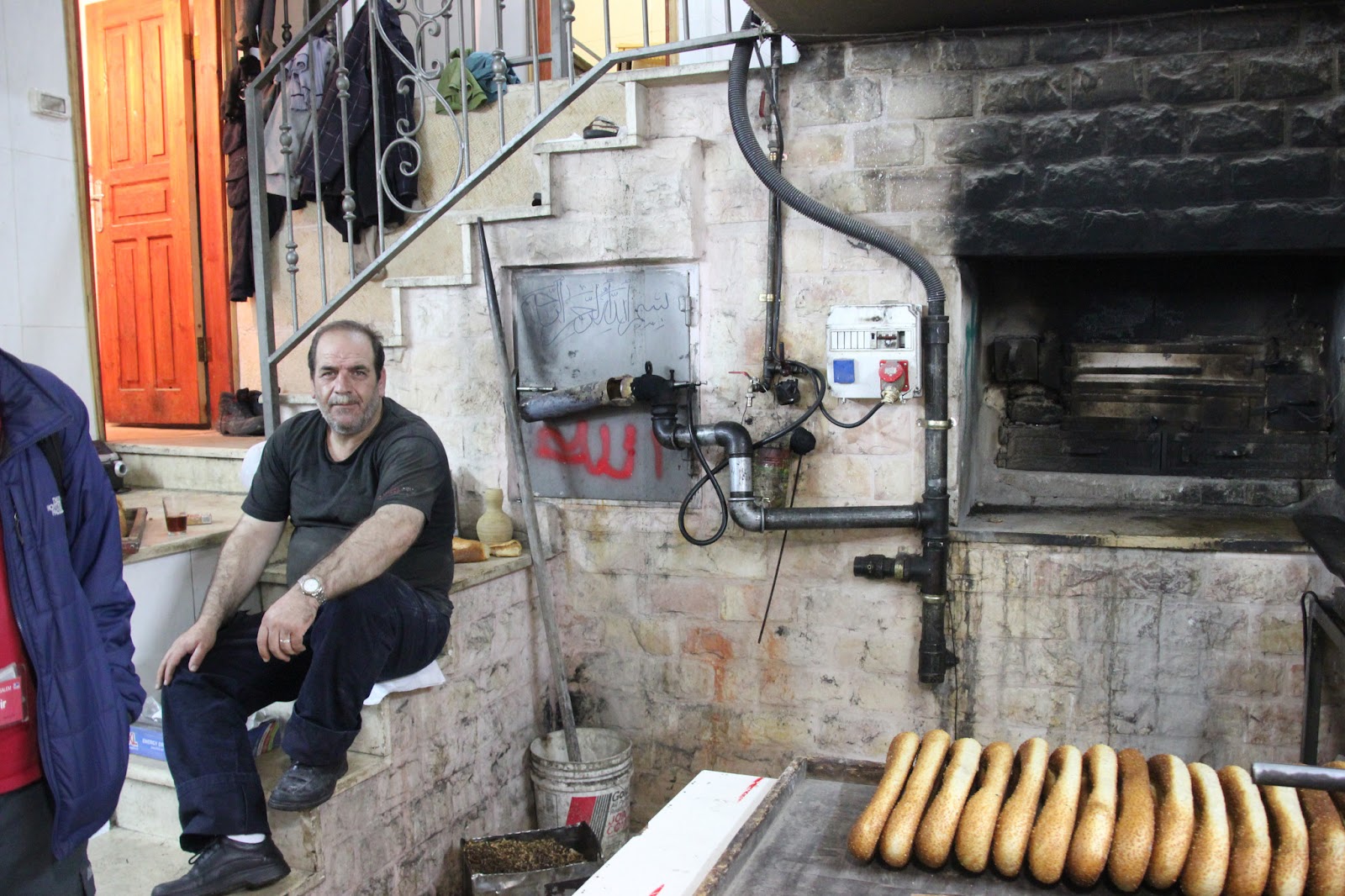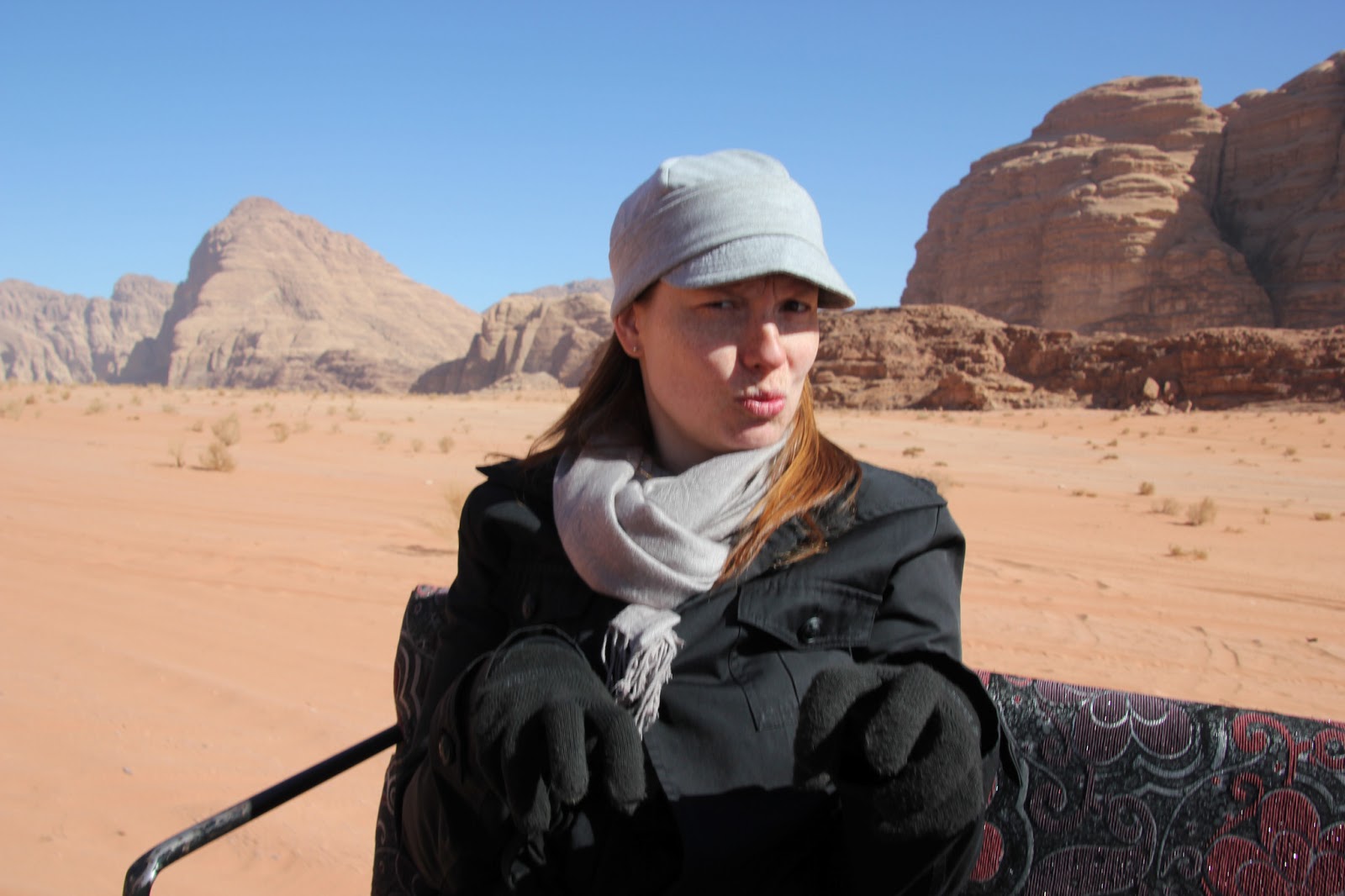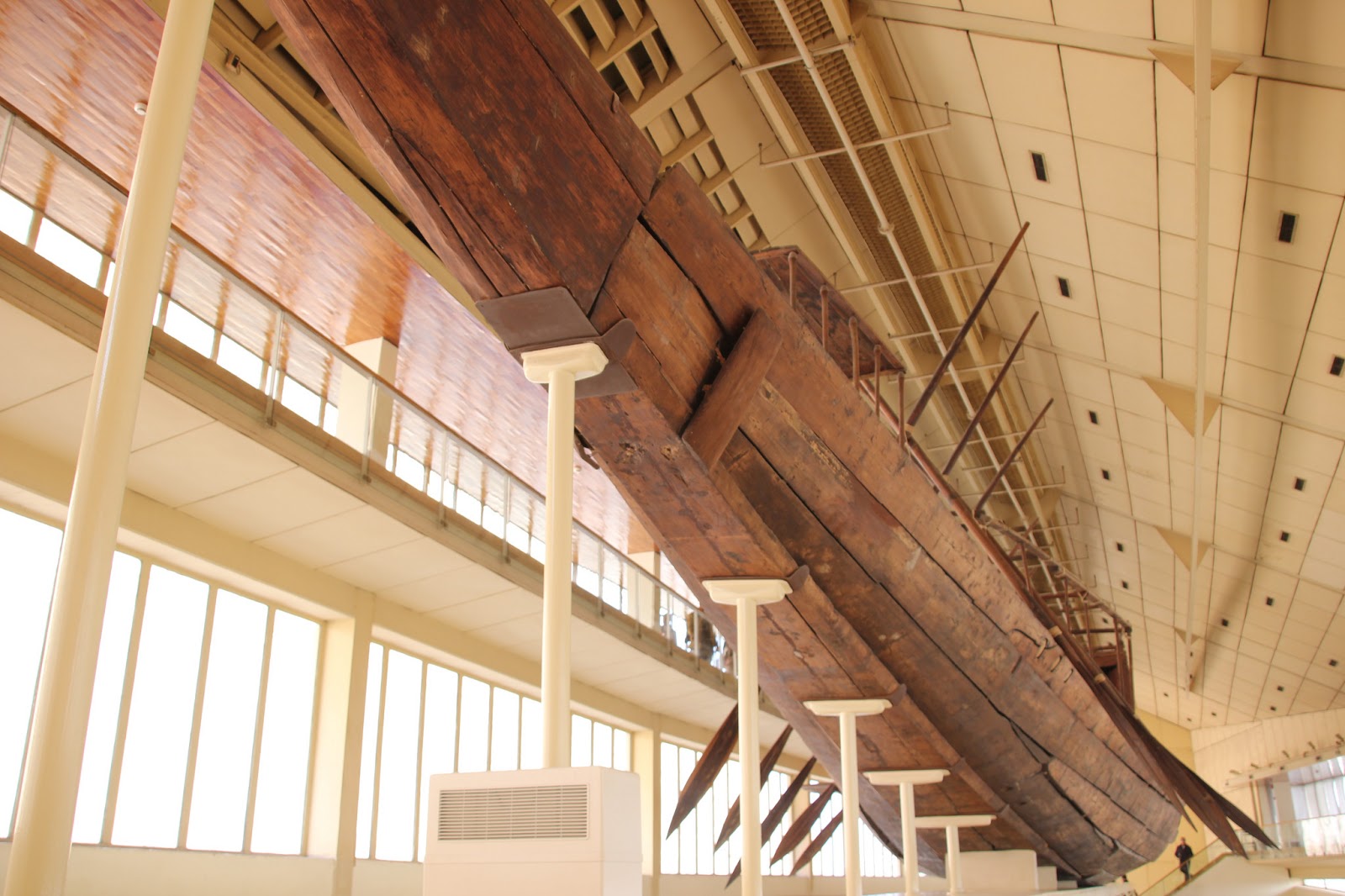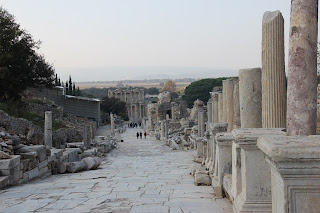Israel
The Beach in Tel Aviv on the Night of our Arrival
Arriving in Tel Aviv, the culinary and entertainment capital of Israel, we spent a night and a day admiring the food, the views, and the Jewish Diaspora Museum before heading for Jerusalem, where we had rented a flat for the week.
Friday Night Shabbat Dinner Together at our Flat in Jerusalem
What Happens During Shabbat in Jerusalem when the
Futon Breaks but Adam Refuses to Stop Reading
At the Jeruslaem Museum
with Rabbi Seed and his Son, Joshua
To put the scale of this place in perspective, when they need to show a synagogue they don't build a model replica, they import and reconstruct the whole thing. The photo below is taken from inside a centuries old synagogue imported from India. It was one of several on display from around the world.
Transplanted Synagogue from Cochin, India
Located near to the shrine of the book, where the Dead Sea Scrolls are on permanent display, is a scale model of the whole city of Jerusalem at the time of the Second Temple, approximately two thousand years ago. Included in the model is a scale replica of the Temple itself, the holiest site in Judaism. The temple was destroyed by the Romans in 70AD. Later, after the advent of Islam, the temple mount, the huge elevated plaza on which the temple had been built, became the site of both the Dome of the Rock and the Al Aqsa Mosque, the third-holiest site in Islam.
The Temple Mount Prior to its Destruction in 70 AD
South of the Temple Mount is the original City of David, whose origins date back to nearly 1000 years before the Second Temple. By the time of the Second Temple, the original city of Jerusalem mentioned in the bible under King David was a fraction of the size of the city that had grown around it. Today, even this city is engulfed by the current one.
Don't worry, all of this will be helpful in understanding the pictures that follow and in showing how in Jerusalem you can’t throw a rock without hitting something both historic and religiously significant, then realising that the rock was too.
The City of David, the Quarter Moon Shaped Enclosure Extending
from the Bottom Right Corner of the Photo to Below the Temple Mount
Visiting the archaeological excavations in the City of David, we were able to see sights from over 2500 years ago that had been mentioned directly in the bible, particularly the books of Samuel, Kings, and Chronicles. For instance, the Gihon Spring, the city's main source of water is mentioned in 1 King's 1:32 as the site at which King Solomon, David's son, was anointed king. As the spring was outside the original city walls, later the bible mentions King Hezekiah building a tunnel from the city to the spring to protect the water supply during times of siege. (2 Chronicles 32:30)
Underground, Walking Towards the Gihon Spring
in the City of David
Walking Through the Gihon Spring Tunnel with
Water up to above our Knees
Even from King Solomon's time at the start of the First Temple period, Jews were forbidden except in very special and specific circumstances to enter certain parts of the Temple. Though there was no visible mark to indicate where the forbidden areas had been after the temple’s destruction, those spots still remained forbidden.
With the adoption of the Temple Mount itself for Muslim and Christian religious sites over the centuries, and unable to know for certain where the forbidden portions of the original temple stood, Jews tended to avoid the plaza on the Temple Mount. Instead they began to pray at the Western Wall. As the support wall closest to the temple's original location on the plaza above, it became the holiest accessible site at which Jews could pray without risking entering a forbidden area. The wall is visible on the left side of the Temple Mount in the picture of the City of David above. This is the reason the dome of the rock is visible on the plaza above it
The Western Wall and the Dome of the Rock
Hot Fresh Bread While on our Religions of Jerusalem Tour (Nom Nom)
Of course, in the annals of world history and religion, there was also a rather important gentleman of some note named Jesus who lived in Israel and died in Jerusalem about two thousand years ago.
Church of the Holy Sephulchre:
Altar Over the Site of Jesus' Crucifixion
Church of the Holy Sephulchre:
Altar Over the Site of Jesus' Tomb and Resurrection
For us, visiting Jerusalem was a great opportunity to gain an appreciation of the history and depth of all three of the world's great monotheistic religions. We were able to tour the public portions of all of the sites above in a single afternoon. This coincided with the start of the Jewish holiday of Chanukkah.
Chanukkah Candle-Lighting at the Plaza of the Western Wall
Chanukkah Candle-Lighting at our Jerusalem Flat
with our Stuffed Friends, Benjy and Smiley
In the modern day, the plaza beside the Western Wall is already far above where it was two thousand years ago. At one point in the city's history, a large scale construction, raising the street level of the surrounding city on a series of arches built on other arches to support a new higher ground level was undertaken. If memory serves, this was done to make the climb to prayer at the Al-Aqsa Mosque and the Dome of the Rock easier for those living in the neighbourhoods around the Temple Mount. (Anyone with greater historical knowledge, please feel free to correct this in the comments or by e-mail).
Prayer at the Western Wall Beneath Ground Level
Today about two-thirds of the wall is actually below ground level, some of which can be seen in a complex known as the Western Wall Tunnels.
Travelling on to Haifa, we were able to spend a delightful three day visit with my father's cousin Haim, his wife Yael, their children and grandchildren. We couldn't have imagined a warmer reception or a friendlier visit!
Shabbat Dinner with Haim and Yael, Tal, Kfir and Mazy and their Children
Weekend Trip to Rosh Ha'Nikrah with Haim, Yael and Tal
We even had a chance to visit the grottoes and seascape at Rosh Ha Nikrah near the Lebanese border, and see hyraxes bathing on the beach. Seriously, hyraxes. This animal is not made up. It exists.
A Hyrax at Rosh Ha'Nikrah
Outside of Jerusalem, there is still no lack of holy sites. Members of the Baha'i faith often refrain from building places to congregate for worship. They believe that prayer can occur anywhere one comes to commune with God. Despite this, their shrine with surrounding gardens in honour of the Bab, the prophet who proclaimed the coming of their religion's founder, Baha'u'llah, has become iconic of the city of Haifa. The gardens themselves are not sacred but designed only to accentuate the beauty of the site. They do that in spades.
Gardens and Shrine of the Bab in Haifa
Outside the Shrine of the Bab
Travelling inland we came to the Kineret, the modern term for the region around the Sea of Galilea, where Jesus held his ministry. The view below is from the mount on which Jesus is believed to have recited his most famous sermon known as The Beatitudes.
View from the Mount of the Beatitudes on the Sea of Galilee
Church of the Beatitudes at the Top of the Mount
We also took the time while in Israel to visit the sights of several ancient battles and sieges. The photo below is for all the engineers in our audience, a diagram from a re-created Roman siege engine at Gamla. The elastic force to fire a huge crossbow bolt came from winding inch thick ropes around two pegs. The sleek sophistication of this design seems ironically centuries ahead of the cluttering monstrosities used by Europeans during the middle ages.
Diagram for a Roman Siege Catapult
We also visited Masada, an abandoned palace on the top of a lone massive flat-topped hill in the Judean desert, and the site of the last Jewish resistance to Roman rule after the fall of Jerusalem. The site is remarkably well-preserved. The Roman siege camps below have never been removed, the paint in the palace above is still intact. Also, it’s very windy.
Herod's Palace at Masada
The Desert View and Winds at the top of Masada
A half-hour drive from Masada is the Dead Sea, famous for having the lowest altitude of any landlocked area on Earth, and for its salt content so high that huge crystals form on the surrounding rocks, bathers float effortlessly in its waters, and exposing your mouth or eyes can sting worse than pouring lemon juice on them. Also, peeing in it is ill-advised.
We opted for the public beach with its cheaper entrance fee, rather than the more expensive less rocky ones nearby. The result was that we cut our hands and feet on the crystals formed on the rocky beach as we entered and exited the water.
Due to our concern about the salt water damaging our cameras, even our waterproof one, we instead provide the following substitute photos.
Benjy and Smiley Help us to Demonstrate Just How Much Salt
Crystallises on the Rocks on the Beaches of the Dead Sea
Crystallises on the Rocks on the Beaches of the Dead Sea
Bathers who are not us Floating in the Dead Sea
Jordan
Arriving in Jordan, we spent a night with a Bedouin family in the desert of Wadi Rum, the area from which Lawrence of Arabia helped organise the Arab uprising against the Turks during World War I. Also, the site of some of the most beautiful desert scenery on Earth.
Bedouin Camp in Wadi Rum, Jordan
The Jordanian Desert Extends behind our 4x4
Aislinn Doing her Best Zoolander Impersonation
Climbing the Rocks at Wadi Rum
Next we visited the ancient city of Petra. Built by the Nabateans, a civilization that successfully avoided Roman rule for several centuries by giving them frequent gifts, adopting their cultural mores, and avoiding becoming even remotely involved in any of their many civil wars, Petra is famous for its tombs carved directly out of the cliffs that encompass the city.
Also the Holy Grail was kept there for several centuries by an immortal crusader knight until George Lucas, Harrison Ford, and Sean Connery blew his cover.
The Treasury at Petra, Jordan
Ancient Nabatean Road Map or Cartoon
about a Camel Named Humpy? You Decide.
Another Section of the City at Petra
Section of a Greek Mosaic in Petra
Egypt
Unexpectedly, with the Egyptian constitutional referendum only days away, all flights from Jordan to our first African stop in Dar Es Salaam seemed to route through Cairo. Given the recent historical tendency of Egyptians to riot during times like this, we were faced with a difficult dilemma.
Where others would have seen a crisis though, we saw an opportunity, a ‘Crisitunity’ if you will. We booked a stay at the swankiest hotel available within a fifteen minute drive of the airport, the better to flee the country if needed. We even used Adam’s many CAIR-related pre-trip stays with Fairmont to upgrade for free to a deluxe Executive suite. This assured us that we could continue to live in luxury while awaiting the possible chaotic collapse of the Egyptian social order.
We then made a day-trip to the pyramids and the Egyptian museum where we were accosted by countless local Egyptians, mostly trying to sell us guide services and “I visited the pyramids” related knick-knacks.
Later, the constitution passed without too much noticeable grumble.
Several weeks after that the riots briefly restarted for other reasons. By this point, we had changed continents.
The Classic Pyramids and Sphinx Shot
Adam Provides Scale to a Single Block of the Great Pyramid of Khufu
The Oldest Boat on Earth: Funerary Bark Unearthed
from in front of the Great Pyramid of Khufu
from in front of the Great Pyramid of Khufu
Coming next Time:
Safaris, Falls, and Indian Food: An African Experience












































































